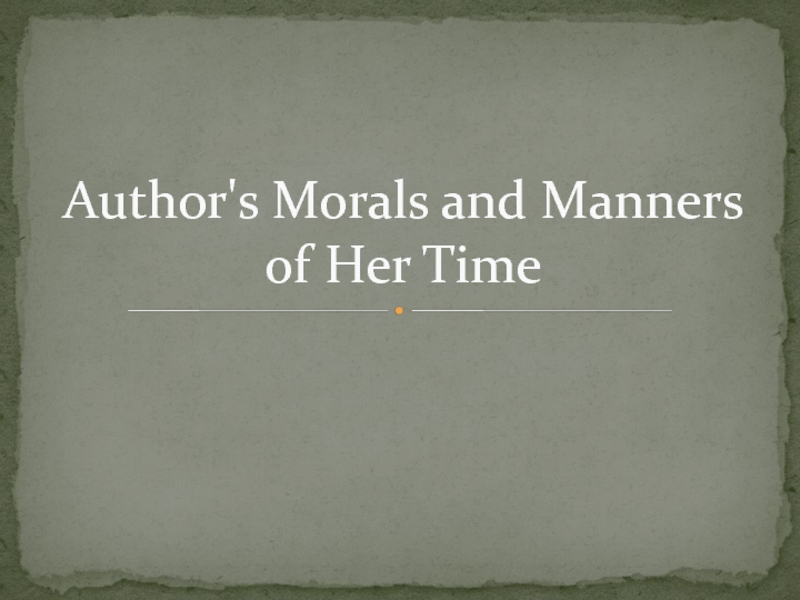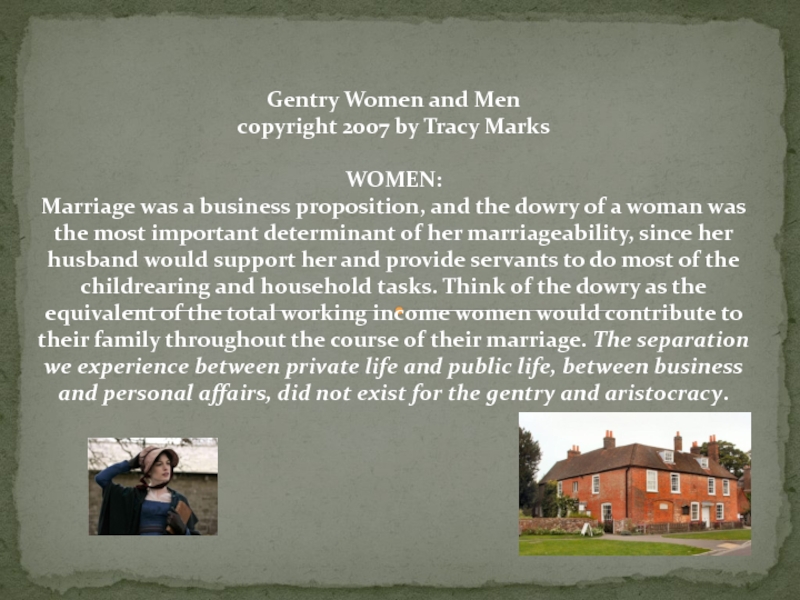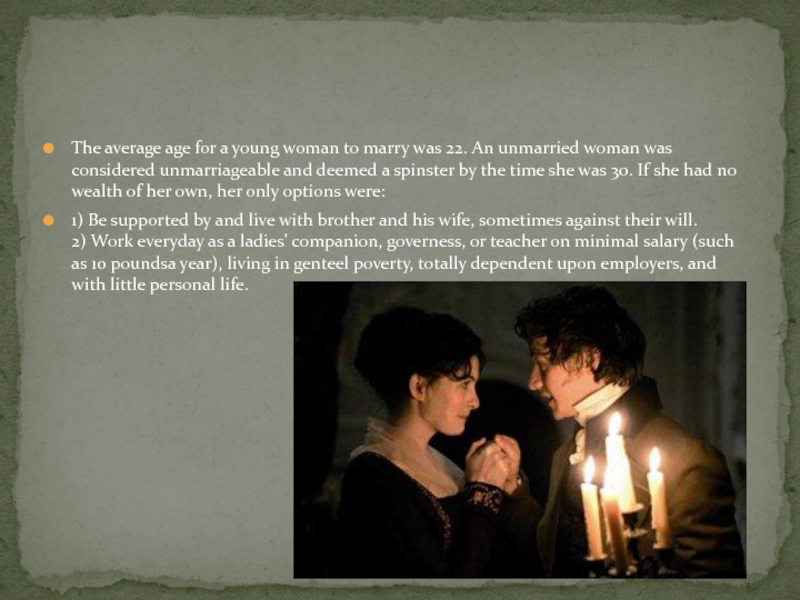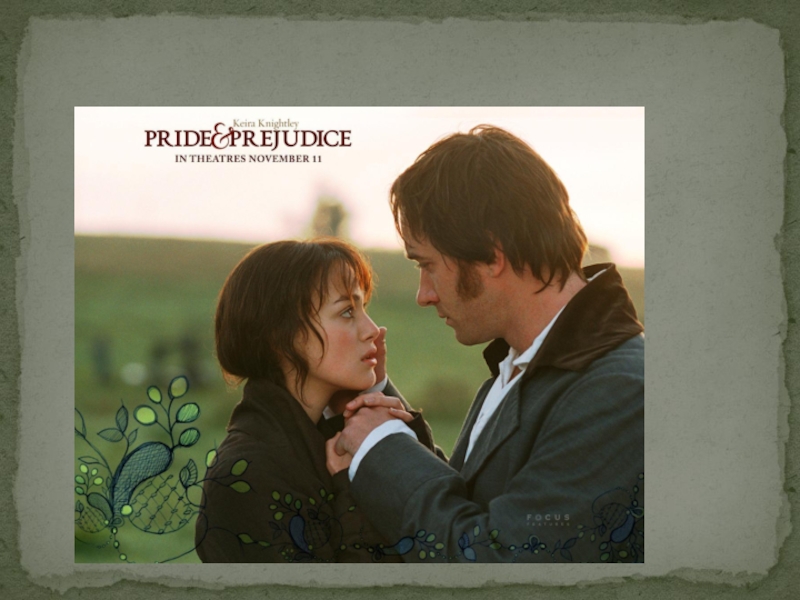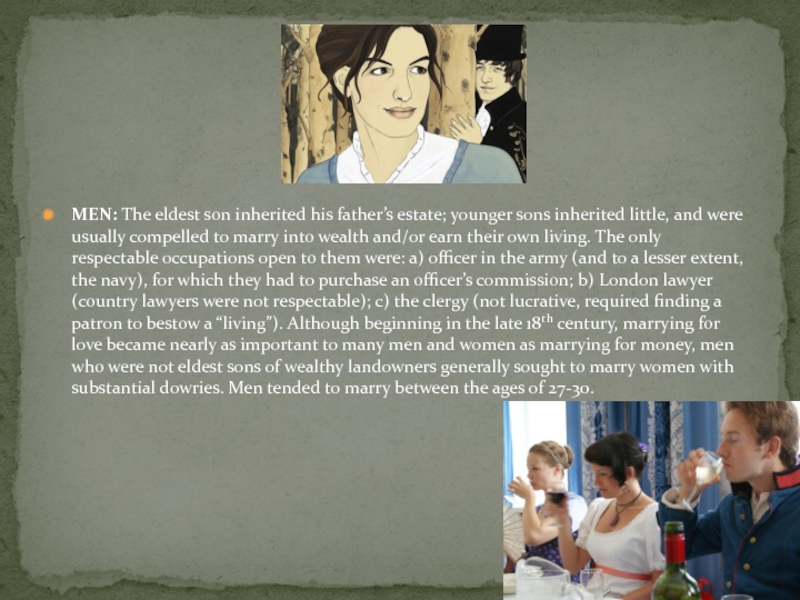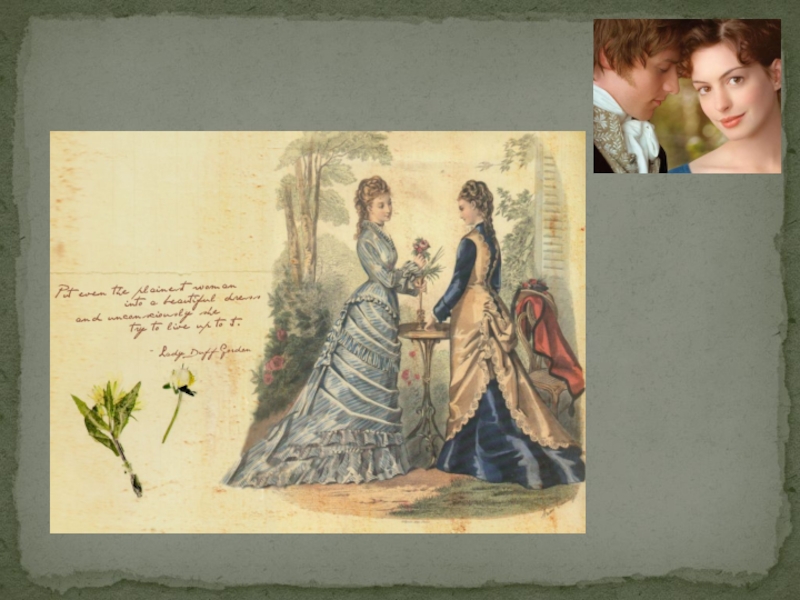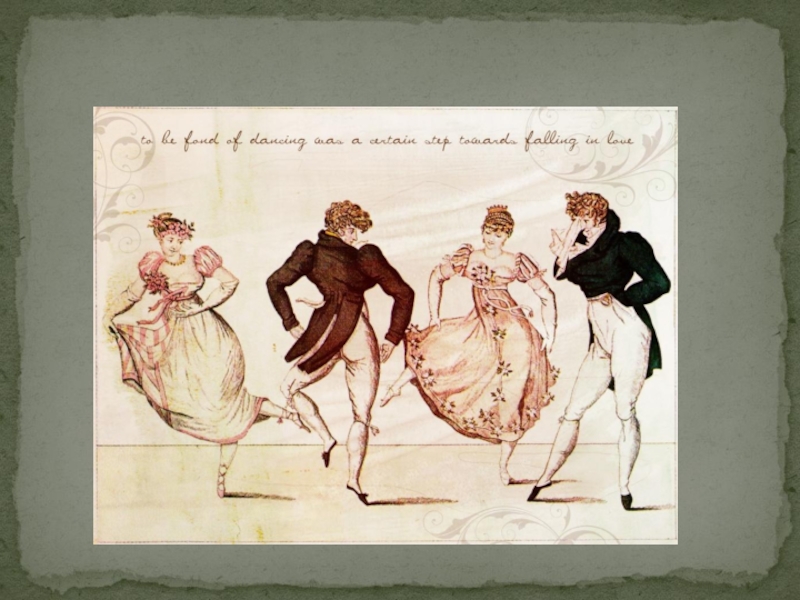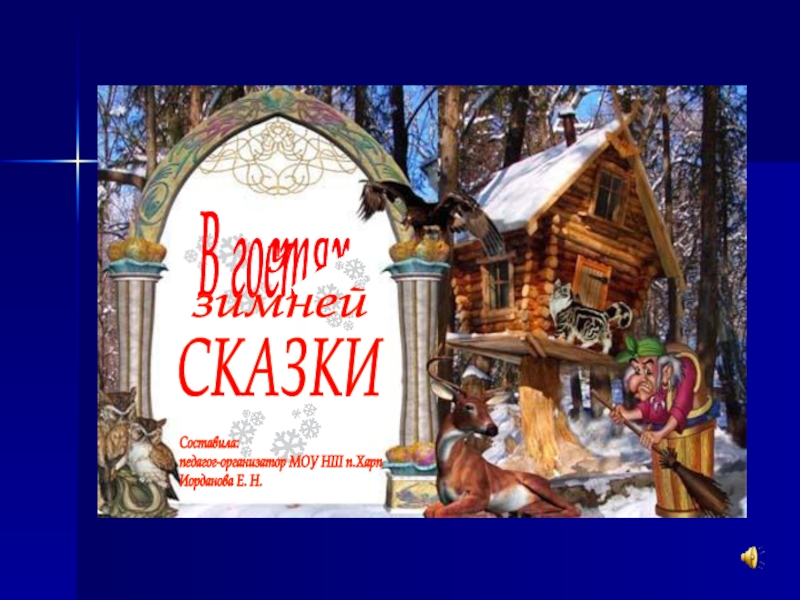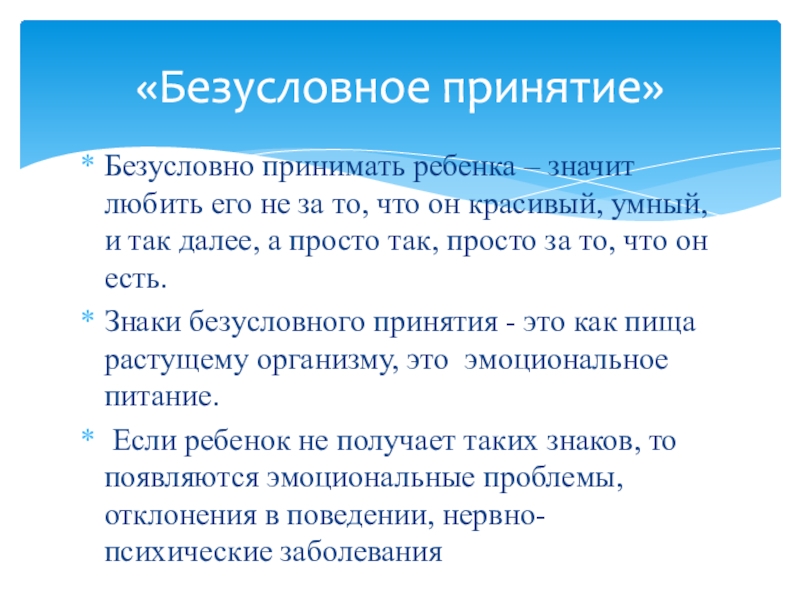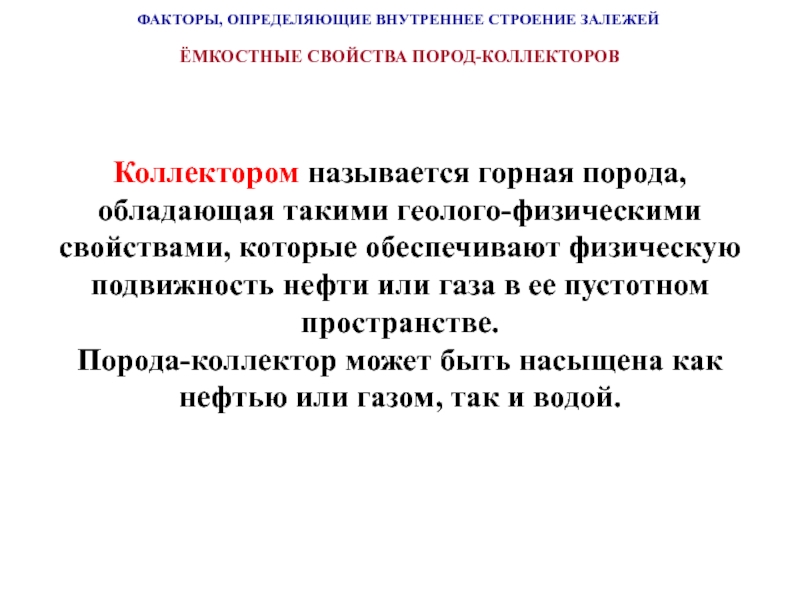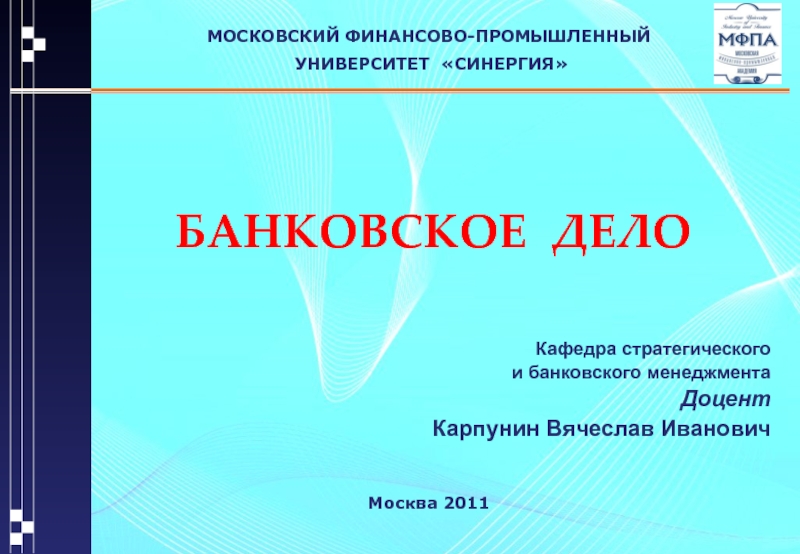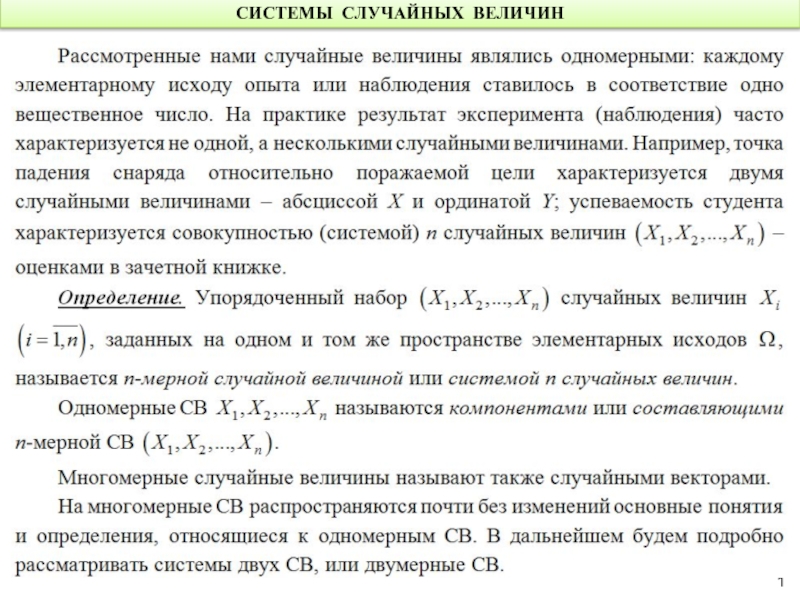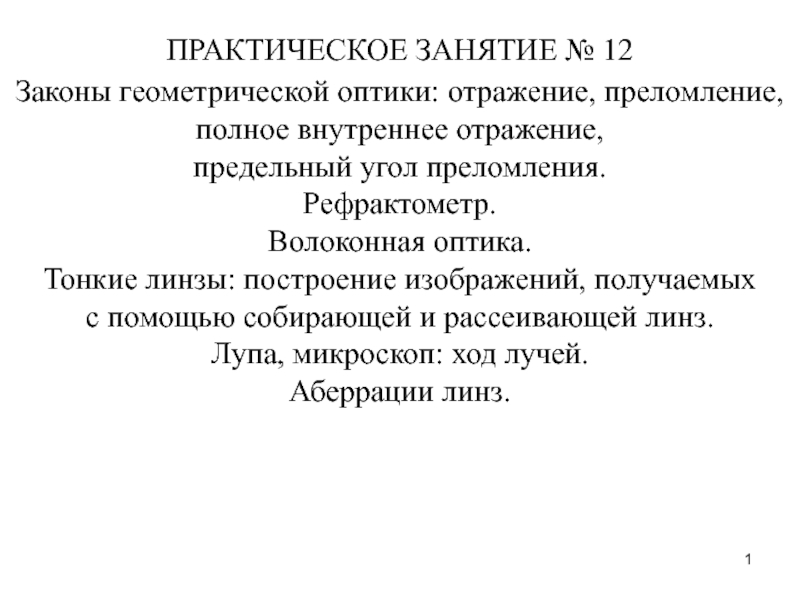Разделы презентаций
- Разное
- Английский язык
- Астрономия
- Алгебра
- Биология
- География
- Геометрия
- Детские презентации
- Информатика
- История
- Литература
- Математика
- Медицина
- Менеджмент
- Музыка
- МХК
- Немецкий язык
- ОБЖ
- Обществознание
- Окружающий мир
- Педагогика
- Русский язык
- Технология
- Физика
- Философия
- Химия
- Шаблоны, картинки для презентаций
- Экология
- Экономика
- Юриспруденция
Author's Morals and Manners of Her Time
Содержание
Gentry Women and Men copyright 2007 by Tracy Marks WOMEN: Marriage was a business proposition, and the dowry of a woman was the most important determinant of her marriageability, since her husband
Слайды и текст этой презентации
Слайд 3Gentry Women and Men copyright 2007 by Tracy Marks WOMEN: Marriage was a business proposition,
Слайд 4The average age for a young woman to marry was
22. An unmarried woman was considered unmarriageable and deemed a
spinster by the time she was 30. If she had no wealth of her own, her only options were:1) Be supported by and live with brother and his wife, sometimes against their will. 2) Work everyday as a ladies’ companion, governess, or teacher on minimal salary (such as 10 poundsa year), living in genteel poverty, totally dependent upon employers, and with little personal life.
